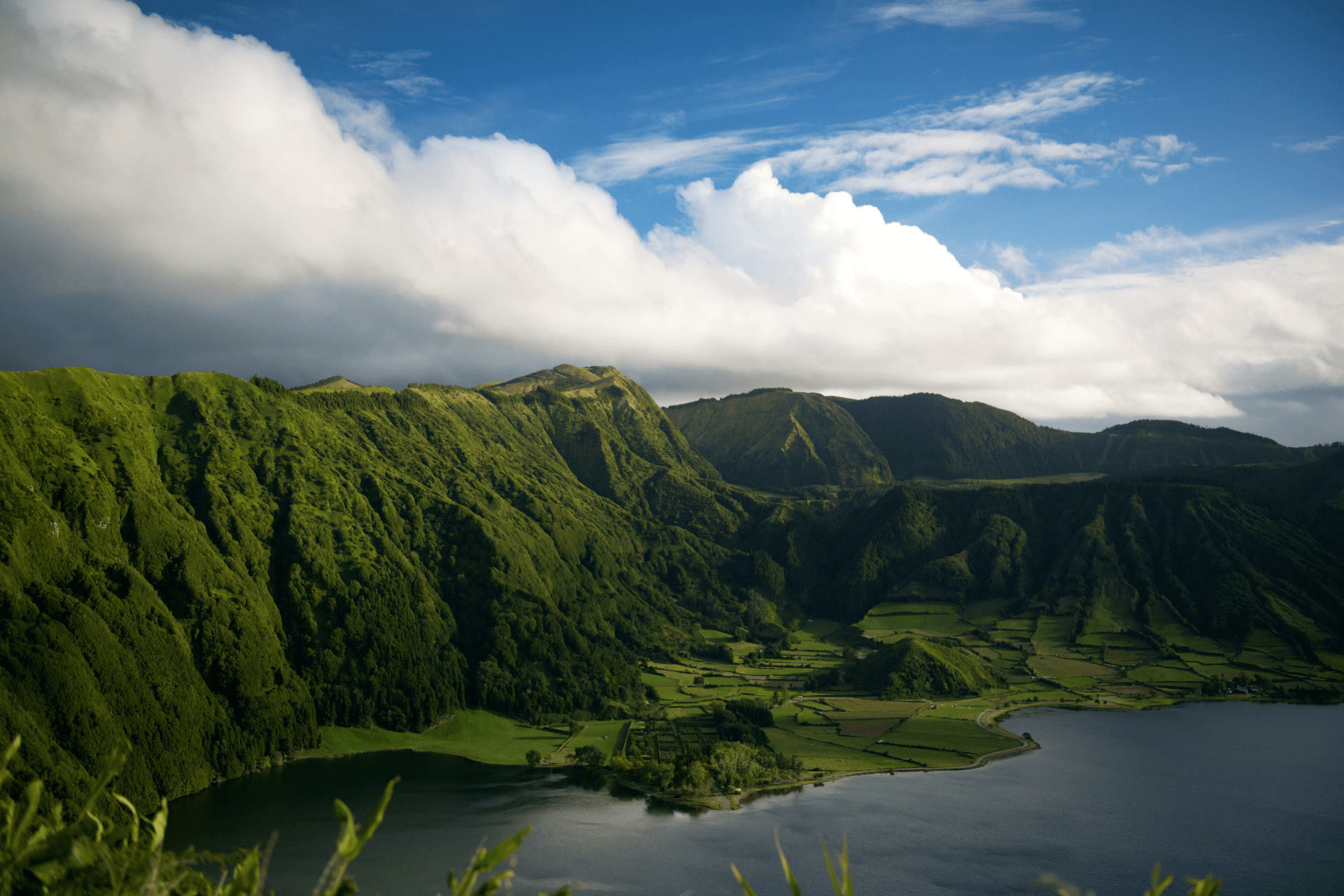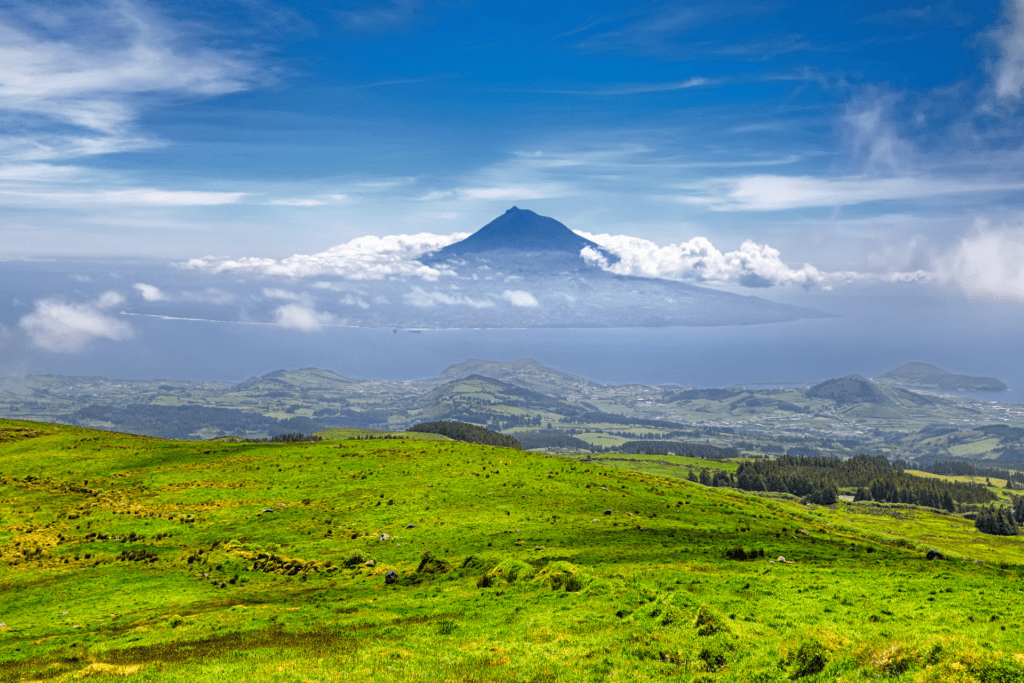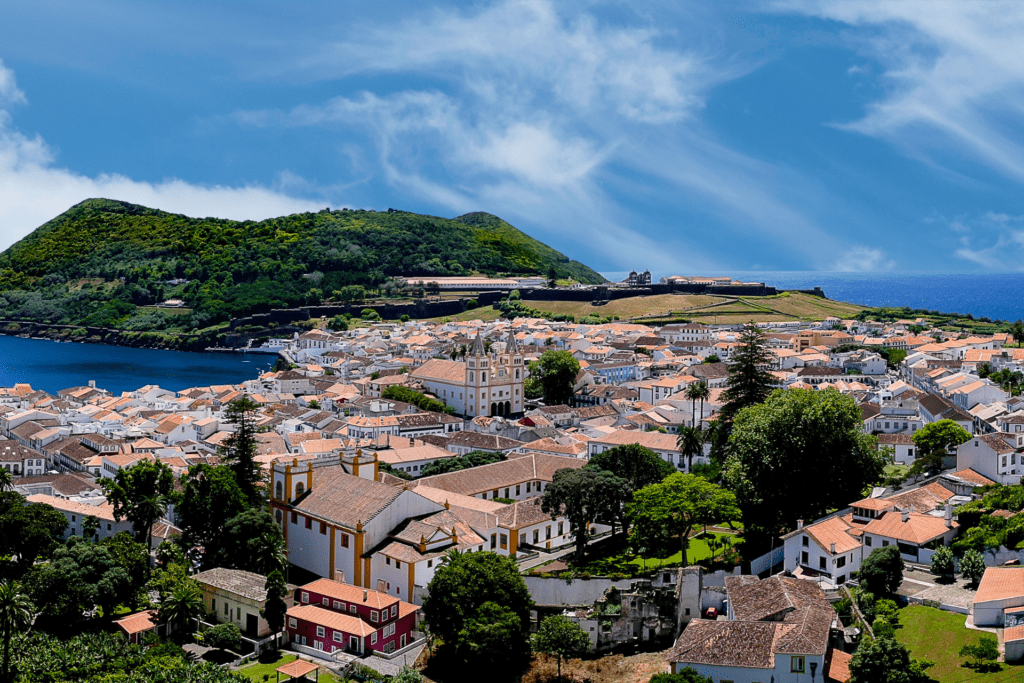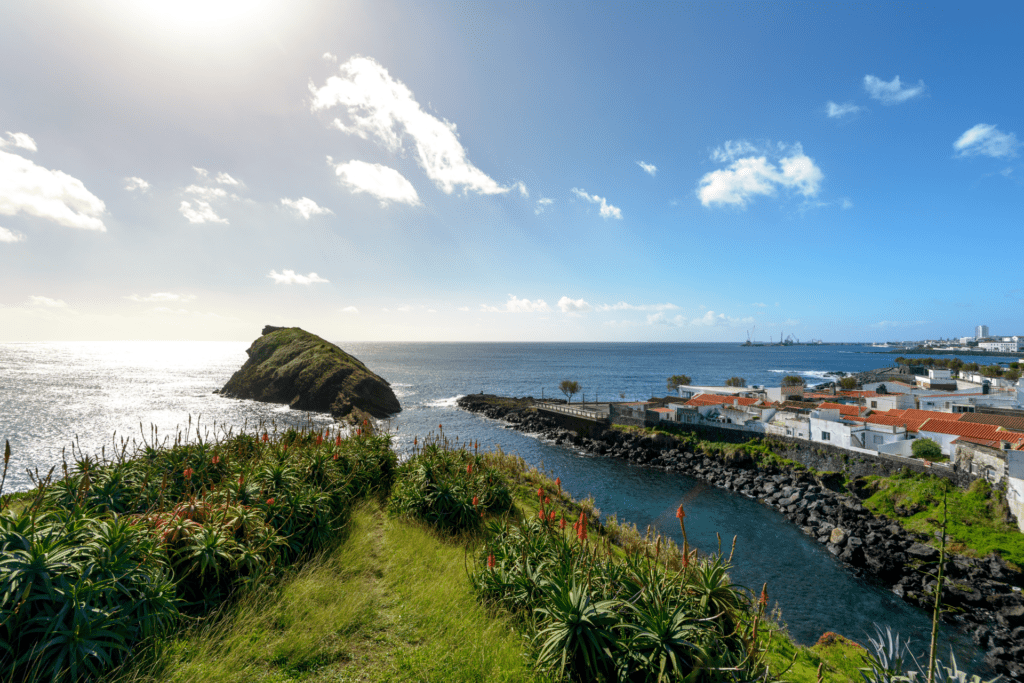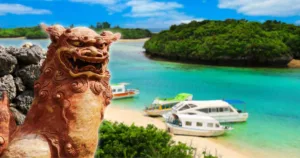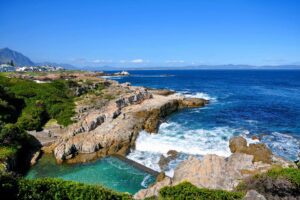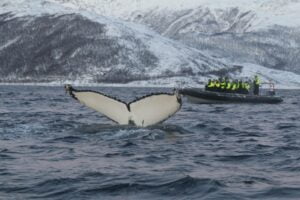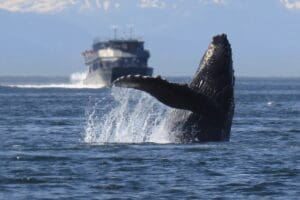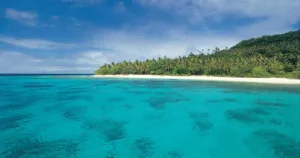Whale Watching Azores: A Guide to Prime Viewing Spots
Embarking on a whale watching journey in the Azores offers you a unique opportunity to connect with nature’s giants in the vast Atlantic Ocean. The Azores, a stunning archipelago located about 1,368 km west of mainland Portugal, serve as a prime destination for observing an impressive array of cetacean species.
The rich marine biodiversity enhances your experience in these Portuguese islands due to the area’s deep waters and unique geophysical features.
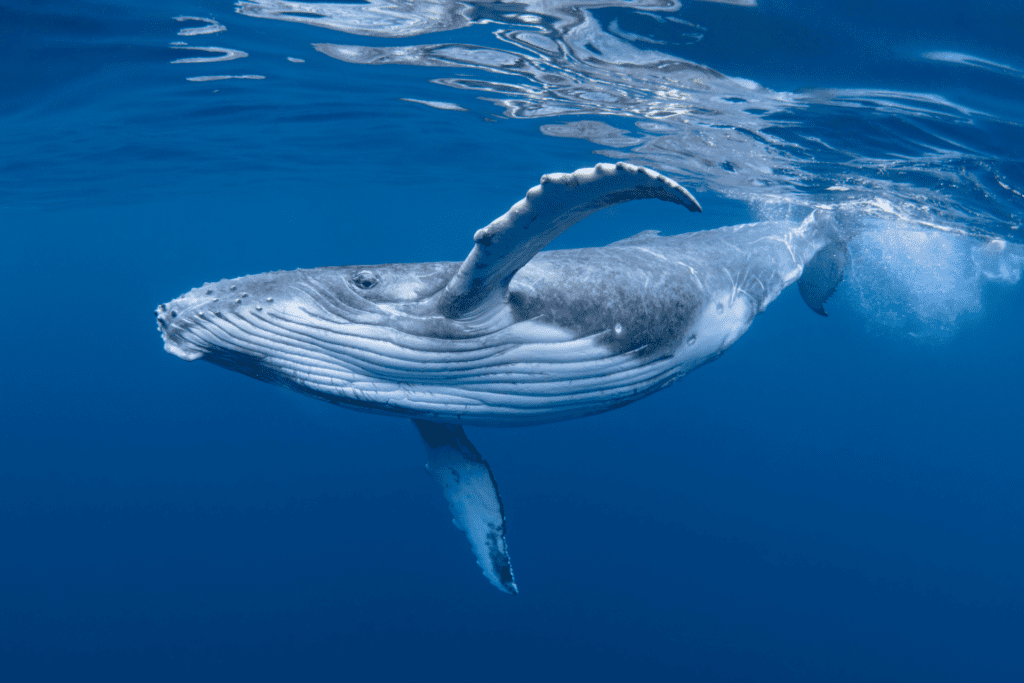

As you set out on a boat into the blue expanse, prepare to encounter various whale and dolphin species that grace the waters throughout the year. The Azores are known for being a playground for the majestic sperm whales and a host of other sea mammals, including common dolphins. These encounters are more than mere sightings; they offer you a chance to witness these magnificent creatures as they breach, dive, and socialize in their natural habitat.
Furthermore, whale watching in the Azores isn’t just a seasonal spectacle; it is an extraordinary adventure that’s available to you year-round. As an essential hub for whale and dolphin activity in the Atlantic, the region provides an unparalleled opportunity to appreciate these marine mammals up close. With a variety of whales and dolphins making their presence known off the coast, your excursion promises to be an enriching and memorable part of your visit to the Azores.
Best Time for Whale Watching in the Azores


The Azores offer a unique opportunity for whale watching, with a season that spans much of the year and conditions that can affect the experience. Your best bet for an unforgettable marine adventure is understanding the optimal times for sightings.
Whale Watching Season
The prime whale watching season in the Azores runs from April to October, with different species visible during varying months. In the spring, particularly April and May, you’re likely to encounter larger baleen whales, such as blue whales and fin whales, as they migrate through Azorean waters. During the summer months, a diverse array of species can be seen, and by October, there’s a higher chance to spot humpback whales. Notably, sperm whales maintain a year-round presence, offering consistent viewing opportunities.
For those looking to maximize their chances, mornings are generally the preferred time for tours, as sea conditions tend to be calmer, with fewer winds. However, afternoons can also be fruitful, especially on days with stable weather patterns.
Weather Considerations
Weather plays a crucial role in your whale watching experience. The Azores, situated in the mid-Atlantic, are subject to variable weather conditions, with the possibility of rapid changes. For calmer seas and clearer skies, aim for outings during the early morning or later in the afternoon when the winds are often milder.
When you embark on a whale watching tour, ensure you’re prepared for all conditions, with layers to accommodate cooler ocean breezes, especially outside the summer months. Regardless of the month, a vigilant eye on the weather forecast is beneficial, as conditions can affect both visibility and sea states, impacting your chance to see these majestic creatures.
The Azores Archipelago
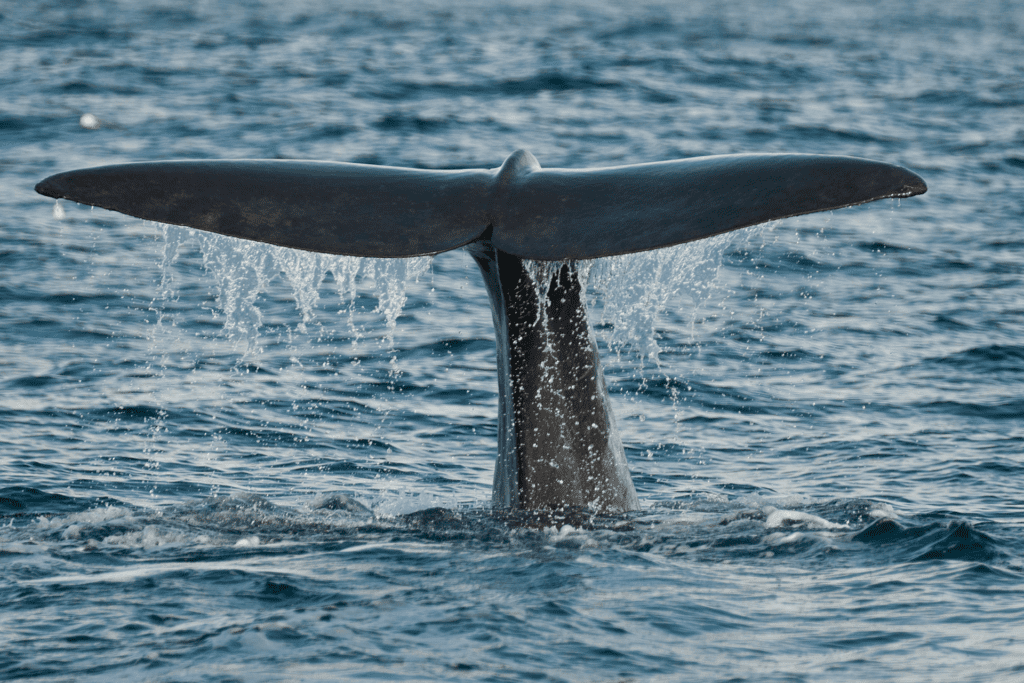

The Azores, a chain of nine volcanic islands, is a prime location for nature lovers and offers a unique blend of volcanic landscapes and rich marine biodiversity.
Island Overview
Each island in the Azores Archipelago has its own character. São Miguel, the largest, is known for its lush landscapes and hot springs. Terceira holds historical significance with charming towns, while Pico is famed for its namesake volcano, Mount Pico, the highest point in Portugal. Faial is recognized for its picturesque marinas and is often a stopping point for transatlantic yachts.
- São Miguel: Vibrant nature, thermal springs
- Terceira: Rich history, bustling towns
- Pico: Majestic volcano, Mount Pico
- Faial: Cosmopolitan marinas, yachting hub
Volcanic Landscapes
Their volcanic origins shape the islands’ dramatic terrain. You can find everything from serene crater lakes to raw, rugged cliffs. The Capelinhos Volcano on Faial is a testament to the islands’ active geology, with its desolate beauty reminding you of nature’s power to destroy and create.
Discovering the Marine Wildlife
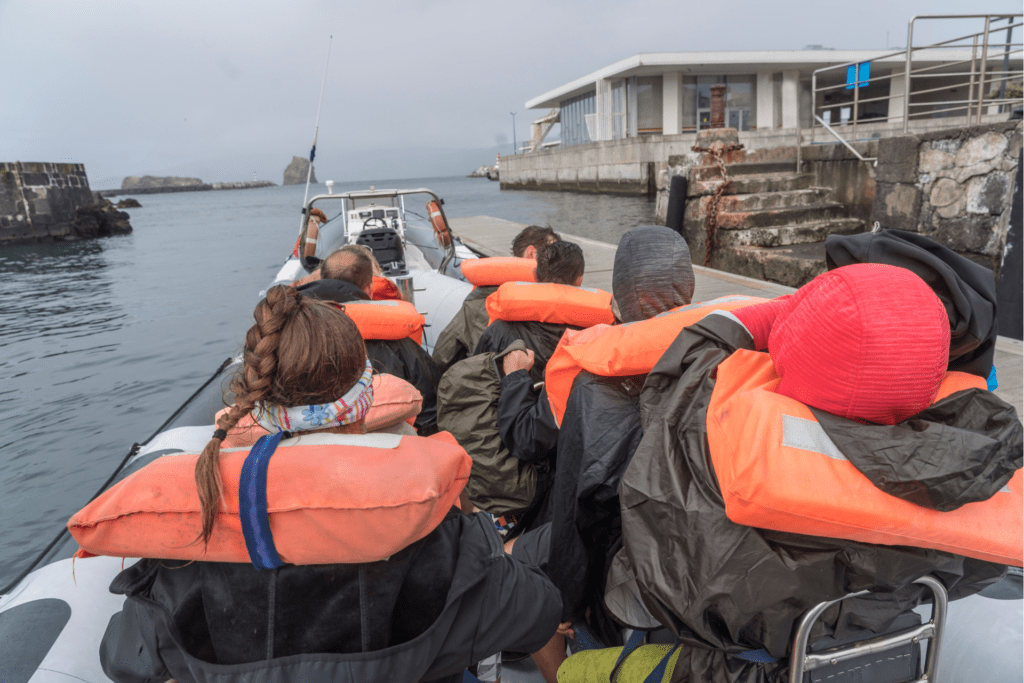

The Azores archipelago is a prime location for encountering an abundance of marine wildlife, particularly cetaceans such as whales and dolphins, which are attracted by the region’s deep waters and abundant food supply.
Cetacean Species
The waters surrounding the Azores are a sanctuary for various cetacean species throughout the year. Sperm whales are year-round residents, famously known for their deep dives and social behavior. Due to the islands’ geographical position, you have the opportunity to encounter majestic blue whales and fin whales during their migration in the spring.
Here’s a concise list of cetaceans you might encounter:
- Sperm Whale: the largest of the toothed whales, it is easily recognized by its massive head and prominent blowhole located near the front of the head.
- Blue Whale: the largest animal on the planet, these magnificent creatures pass through Azorean waters, usually between March and June.
- Sei Whale: sleek and streamlined, sei whales are often seen in Azorean waters in the spring and fall.
- Humpback Whale: identifiable by their large pectoral fins and unique tail markings, humpbacks visit the Azores, generally in the winter and spring.
- Fin Whale: the second-largest whale species, they’re known for their high speed and long, slender bodies.
- Pilot Whale: a type of dolphin, these social animals can often be found in the company of others in their pod.
Other Marine Life
Beyond cetaceans, the Azores’ marine ecosystems brim with a diverse range of marine life. Turtles, fish, and various species of birds all thrive in this environment. One might catch sight of dolphins playfully riding the waves alongside boats or observe the more elusive pilot whales.
Marine life to look for includes:
- Turtles: primarily loggerhead turtles that are frequently spotted.
- Fish: a variety of fish, from the small and colorful to large species such as tuna and marlin.
- Birds: seabirds such as Cory’s shearwater are commonly observed gliding over the water.
- Dolphins: common, bottlenose, and Risso’s dolphins are just a few of the friendly species that inhabit these waters.
When embarking on a whale-watching tour, you may be accompanied by marine biologists, who provide insights into the behaviors and habitats of these marine species, enhancing your experience and understanding of the Azores’ remarkable marine wildlife.
Planning Your Adventure


When planning your whale watching adventure in the Azores, selecting the right tour operator and knowing what to expect on the tour are crucial steps to ensure a memorable experience.
Choosing a Tour Operator
Reputation and Experience: Look for an operator with a strong track record for both safety and environmental stewardship. Operators like Futurismo have been conducting whale watching tours since 1990 and are praised for their expertise and commitment to nature.
- Boat Types: Assess the type of boat offered by the tours. While larger vessels provide more comfort, smaller boats, such as a zodiac boat can often offer a closer encounter with marine life.
Guides and Biologists: Ensuring that your tour is led by knowledgeable guides or biologists, like those mentioned in bePortugal’s comprehensive guide, can enrich your experience with informative commentary.
Tour Size: Consider the size of the tour group. Smaller groups may allow for a more personal experience.
What to Expect on a Tour
Duration and Sightings: Whale watching tours in the Azores typically range from half a day to a full day. Sightings can never be guaranteed, but the Azores is a prime location for encountering a variety of species due to its deep waters and abundant marine life.
Wildlife: Expect to potentially see not only whales but also dolphins and sea turtles in their natural environment.
- Preparation: Dress in layers, as the weather can change rapidly, and bring sun protection, as well as anti-seasickness medication if you’re prone to it.
Onboard Facilities: Larger boats typically offer amenities such as restrooms and covered seating areas, which can make the excursion more comfortable, especially for longer tours.
Ethical and Sustainable Practices
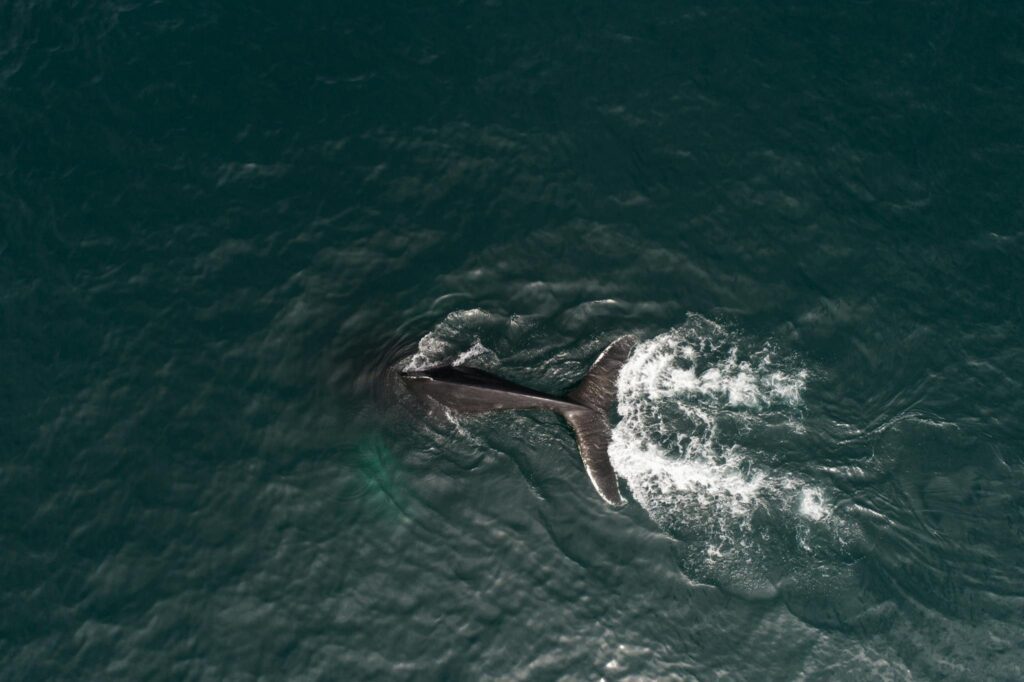

Engaging in whale watching in the Azores is not only about admiring these magnificent creatures; it is also crucial to respect and protect their natural habitats. Ethical whale watching prioritizes the well-being of whales and strives to minimize any negative impact on their environment.
To support conservation efforts, operators adhere to guidelines ensuring that boats keep a proper distance from the whales to avoid causing them stress. Some tours are even led by marine biologist guides, providing not just an encounter, but an educational experience that deepens your understanding of whale behavior and the importance of preserving marine life.
Whale sanctuaries serve as safe havens where these marine mammals can thrive without the threat of hunting. These areas are critical for research as well, offering scientists opportunities to study whales in their natural surroundings. By participating in a whale watching tour that contributes to research and education, you are directly supporting conservation initiatives.
Your presence on a responsible whale watching tour can encourage sustainable practices, such as:
- Respecting wildlife: By following the code of conduct, you help minimize disturbance to the whales.
- Supporting local research: Choose tours that collect data for ongoing research projects, continuing efforts to understand and protect cetaceans.
Fostering education: Engage with programs that inform and inspire communities about marine conservation.
By considering these practices when selecting a whale watching experience, you play a vital role in the protection and sustainability of whale populations in the Azores.
Photography and Equipment Tips
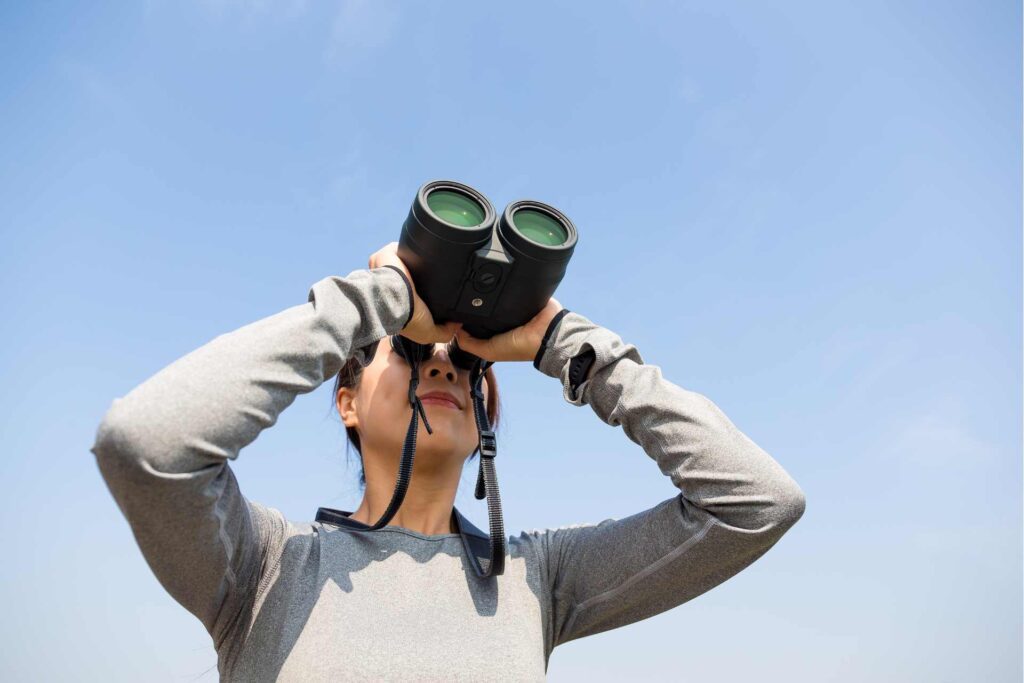

When preparing for a whale watching trip in the Azores, it’s essential to have the right photography equipment to capture those once-in-a-lifetime moments.
Camera & Lenses:
- Camera: Bring a DSLR or mirrorless camera that performs well in various lighting conditions.
- Zoom Lens: A zoom lens (200mm to 400mm) is crucial for close-up shots of whales from a distance. Stability is key, so consider a lens with image stabilization.
Protection for Gear:
- Waterproof Bag: Keep your camera and accessories dry with a waterproof bag or case. Sudden splashes are common, and you want your equipment protected.
- Waterproof Jacket: Similarly, a waterproof jacket will protect both you and your camera gear when not shooting.
Photography Tips:
- Stability: Use a strap to stabilize your camera. High waves can make it challenging to keep your camera steady.
- Settings: Set your camera to a high shutter speed to capture quick movements, and use continuous shooting mode to increase your chances of a great shot.
- Sunscreen: Protect your skin with sunscreen since you’ll be out on the open water for hours.
- Clothing: Layer clothing to adjust to the changing weather, and wear a hat to prevent sun glare in your photos.
By using the right gear and employing these tips, your whale watching experience in the Azores will not only be enjoyable but also photographically rewarding.
Swimming with Dolphins
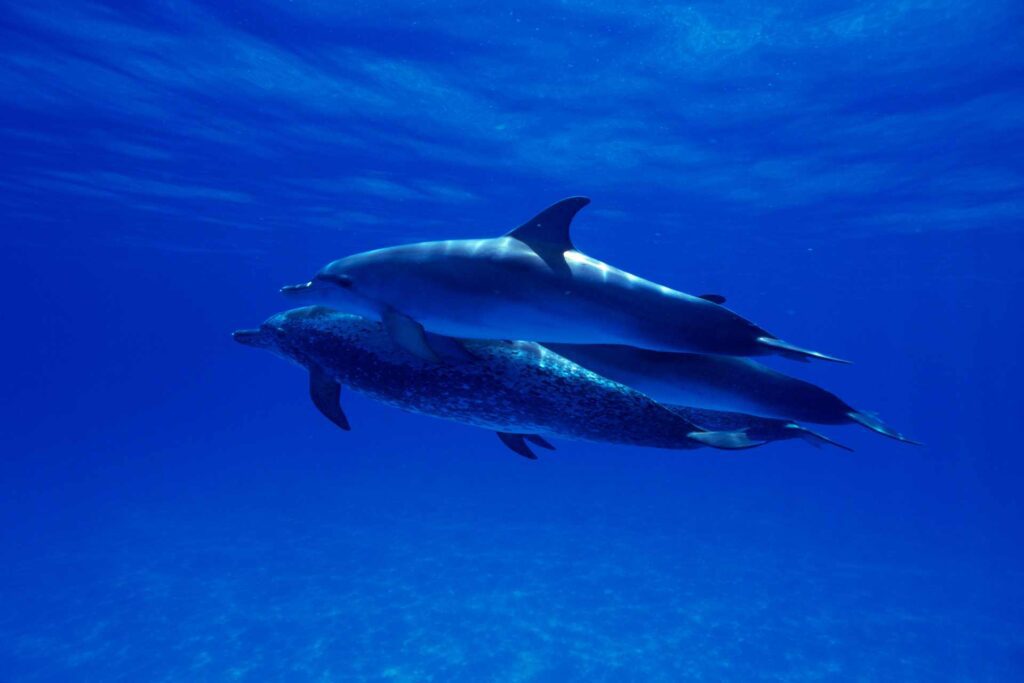

When you visit the Azores, the opportunity to swim with dolphins in their natural habitat is a breathtaking and unforgettable experience. The clear waters around the archipelago offer a unique setting where you can snorkel alongside these intelligent and playful marine animals.
Before your adventure begins, it’s important to be aware of some guidelines to ensure a safe and respectful encounter:
- Always follow the instructions of your guide.
- Avoid making sudden movements that could startle the dolphins.
- Keep a respectful distance, allowing the dolphins to approach you on their terms.
Swim Gear Checklist:
- Snorkel and mask
- Fins for swimming
- Wetsuit (if necessary for warmth)
When in the water, you’ll likely be swimming in small groups. This not only gives you a more personal encounter with the dolphins but also helps minimize the impact on the animals and their environment. Wearing a wetsuit can help with buoyancy and provide warmth, as the Atlantic waters can be cool.
As you float in the azure waters, you’ll hear the clicks and whistles of the dolphins—an enchanting experience revealing the complex communication between these creatures. Remember to remain calm and composed; your serene presence allows the dolphins to become more curious and interactive.
Swimming with dolphins is more than just an activity; it’s a meaningful connection with marine life, accentuating the beauty and biodiversity of the Azores. To plan your adventure, comprehensive packages are available such as those provided by CW Azores, promising a professional and memorable experience.
Guided by Experts
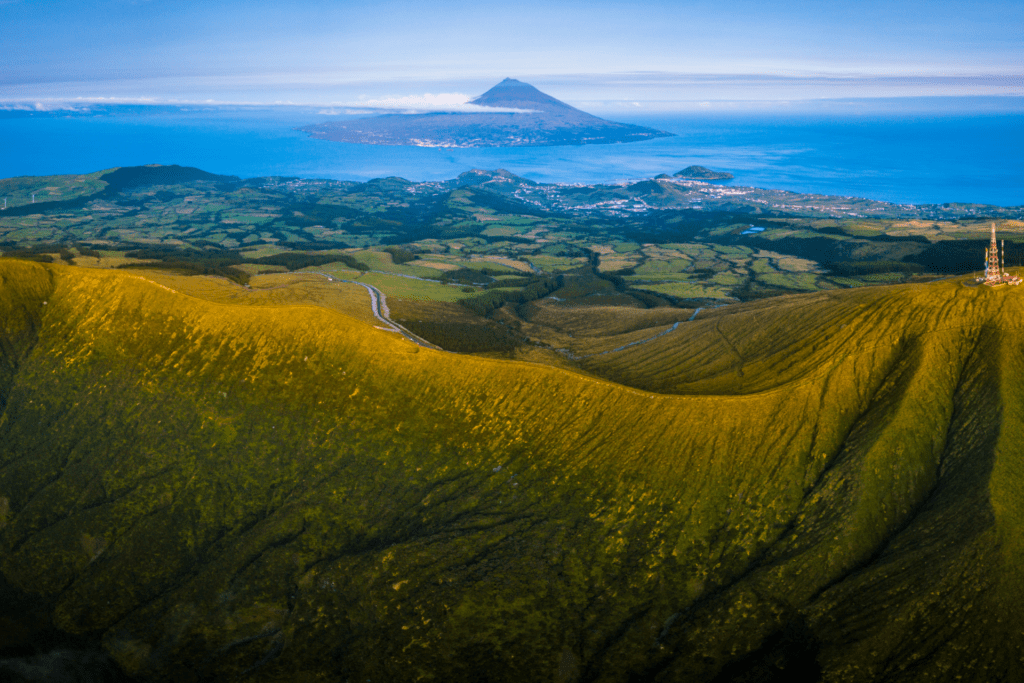

When embarking on a whale watching adventure in the Azores, expert guidance can enrich your experience immeasurably. Individuals will lead your excursions with deep knowledge of local marine life and the migratory patterns of whales and dolphins.
Marine Biologist Insights
With a marine biologist on board, you’ll gain valuable scientific insights into the behaviors and characteristics of various whale species. These experts can identify and explain the significance of whale and dolphin behaviors you may witness, from breaching sperm whales to the acrobatic displays of pods of dolphins. Their expertise also extends to the conservation status and habitats of these majestic creatures, offering you a comprehensive understanding of the marine ecosystem.
Local Spotters
Local spotters play a crucial role in locating the best sites for whale sightings. Leaning on generations of knowledge, they can read ocean conditions and animal behavior to predict where and when you’re likely to encounter whales. Relying on their sharp eyes and intimate familiarity with the Azores’ waters, these spotters can help ensure that your whale watching experience is as rewarding as possible.
Experience Beyond Whales
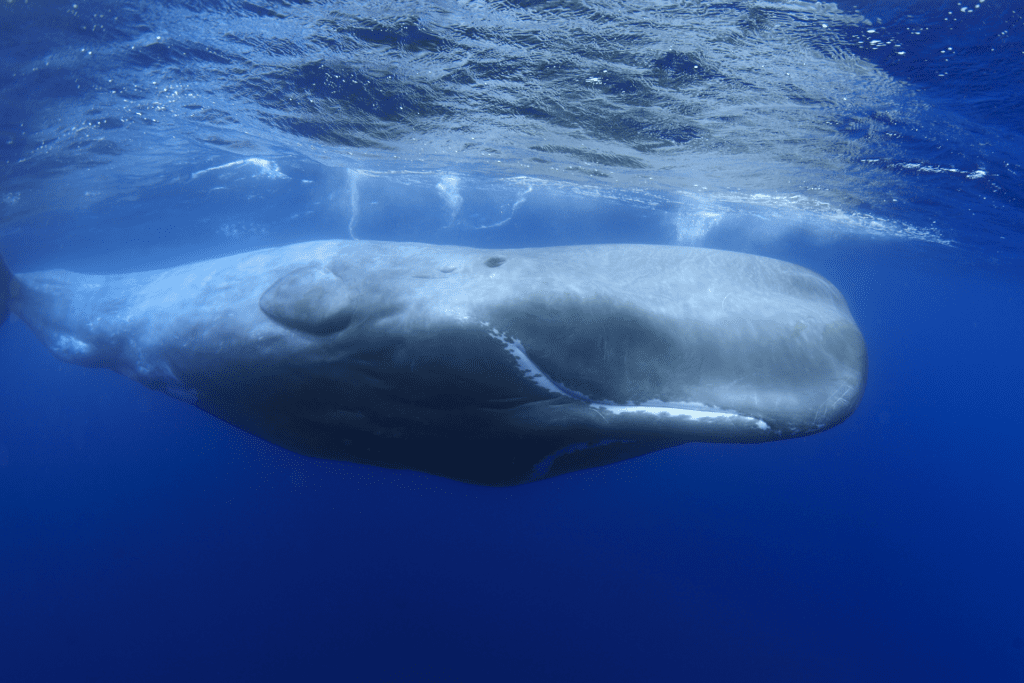

While whale watching is a highlight in the Azores, your adventure doesn’t end with these magnificent sea mammals. You’ll discover the archipelago’s other natural wonders, from the rich avian life to the stunning coastal landscapes.
Bird Watching
In the Azores, you can witness a fascinating array of bird species, both endemic and migratory. The islands serve as a crucial stopover for many birds crossing the Atlantic. Look out for the Monteiro’s storm-petrel, a bird you’ll find only here. The shores of Lagoa das Furnas offer an excellent vantage point where rare bird sightings are a thrilling possibility.
Coastal Sights
The Azorean coastline is a tapestry of dramatic cliffs, lovely beaches, and interesting marine fauna. You may spot turtles and various fish in the crystal-clear waters. Beaches like those on São Miguel give you access to unique geological features, including hot springs nearby, particularly in areas like Furnas. Soak in natural hot springs for a rejuvenating experience while listening to the sounds of the ocean.
Preparation and Safety
When embarking on a whale-watching journey in the Azores, your experience will be far more enjoyable if you come well-prepared and are aware of safety practices. It’s important to pack essential items and take proactive measures against seasickness.
What to Bring
- Clothing: Wear layers that you can add or remove as needed due to the Azores’ changeable weather. A waterproof jacket is also a must.
- Sun protection: Bring sunscreen, a hat, and sunglasses to guard against UV rays reflected by the water.
- Binoculars: Enhance your viewing experience by bringing a pair for closer observation of the whales.
- Camera: If you want to capture the moments, make sure your camera is charged and ready.
- Snacks and water: Keep hydrated and maintain energy levels with light snacks and plenty of water.
Seasickness Precautions
- Medication: If you’re prone to motion sickness, consider seasickness pills which are best taken before you board.
- Stay Hydrated: Drink plenty of water, but avoid alcohol and heavy meals before your trip.
- Focus on the Horizon: On the boat, if you begin to feel unwell, keep your gaze on the stable horizon.
- Fresh Air: Get plenty of air and try to stay in the middle of the boat where the motion is minimized.
Historical Context
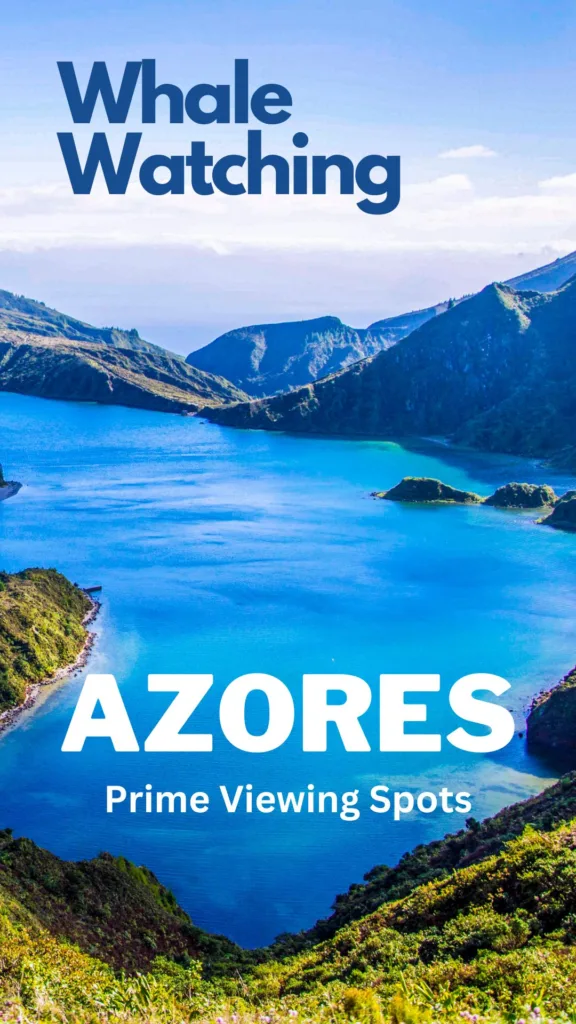

The Azores, with its deep-rooted maritime traditions, offers a profound look into the evolution of humanity’s relationship with whales—from exploitation to conservation and tourism.
Whaling History
In the 15th century, Portuguese settlers first inhabited the rugged, volcanic islands of the Azores, which would later become a center for whaling activities. By the early 1800s, American Yankee Whalers recognized that the Azores islands presented an excellent opportunity to hunt for whales due to the deep waters around the volcanic islands, which created a suitable environment for cetaceans. Whaling became integral to the islands, shaping both economy and culture. However, this era of intense whaling faced transformation as the world’s perception of whaling shifted.
Cultural Legacy
Whaling’s imprint on Azorean culture is unmistakable, influencing art, cuisine, and folklore. Despite the cessation of whaling in the mid-20th century, the legacy persists through museums and cultural narratives, a poignant reminder of the past. Now, your engagement with this heritage is more about observation and protection than hunting. The islands promote sustainable whale-watching tourism, allowing you to experience the majesty of whales while contributing to their preservation—a testament to the Azores’ commitment to conservation.
Frequently Asked Questions
Whale watching in the Azores is a must-do experience for nature enthusiasts. Here are some important specifics to help you plan your adventure.
What types of whales can be observed during whale-watching tours in the Azores?
In the rich waters of the Azores, you can observe several whale species, including the Sperm Whale, which resides year-round, and migratory species like the majestic Blue Whale and Fin Whale.
How much does a typical whale-watching tour cost in the Azores?
Whale watching tour prices vary, but on average, you can expect to pay between 50 to 100 euros depending on the duration and type of tour.
Which island is recommended for the best whale-watching experience, Pico or São Miguel?
Both islands offer remarkable opportunities, but Pico is renowned for its proximity to deep waters where whales are frequently sighted.
During which months are blue whales most commonly sighted in the Azores?
Blue Whales are most commonly sighted between March and June as they migrate through the Azorean waters.
What marine life, besides whales, can be seen on a whale-watching trip in the Azores?
Dolphins, sea turtles, and a variety of seabirds can also be observed during a whale-watching trip in the Azores.
Are there any specific whale-watching guidelines or regulations in place in the Azores to protect marine life?
Yes, there are strict guidelines to ensure minimal disturbance to marine life, including maintaining a safe distance from the animals and limiting the time spent with them.

